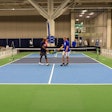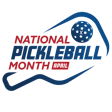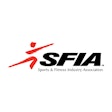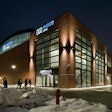Source: National Athletic Trainers' Association DALLAS, June 27, 2013 - During its 64th Annual Meeting and Clinical Symposia in Las Vegas today, the National Athletic Trainers' Association (NATA) pre-released a position statement on the "Conservative Management and Prevention of Ankle Sprains in Athletes." The statement, created by the NATA Research & Education Foundation, will appear in the July issue of the Journal of Athletic Training, NATA's scientific publication. Ankle sprains remain one of the most common joint injuries that affect athletes of all ages and in all sporting events. An estimated 28,000 ankle injuries occur in the United States each day, translating into an enormous impact on the health care industry and resulting in millions of dollars spent on treatment, according to the statement. In sports, ankle injuries are the most common with some estimates attributing more than 45 percent of all athletic injuries to ankle sprains. "Most ankle sprains result from damage due to an acute twisting of the foot or are caused from landing from jumps, stepping on another athlete's foot, trauma at heel strike during running or stressing the foot while in a fixed position," according to lead author Thomas W. Kaminski, PhD, ATC, University of Delaware, Athletic Training Education Program. "The guidelines we've recommended provide sports medicine professionals, coaches, parents and others with appropriate steps to provide the best possible care." Sports with the highest incidence of ankle injuries are field hockey, followed by volleyball, football, basketball, cheerleading, ice hockey, lacrosse, soccer, rugby, track and field, gymnastics and softball. The new position statement offers very specific guidelines on ankle sprain prevention and treatment. Highlights include: Diagnosis:Ascertain the patient's history, including the cause of injury and past injuries. This can provide important insights, though severity of injury may be difficult to determine.Assess active, passive and resistant range of motion (ROM) about the ankle. This can provide insight into injury to ligaments, muscles, tendons and nerves.Administer special testing to assess injury to the lateral ankle ligaments performed soon after injury and before joint swelling. This may have better diagnostic accuracy than tests performed after swelling has occurred.Use magnetic resonance imaging (MRI) as a reliable technique to detect acute tears of the ligament after injury. Compared with MRIs, diagnostic ultrasound is useful in detecting acute ankle injury. Treatment and Rehabilitation:· Cryotherapy (cold therapy) should be applied to acute ankle sprains to reduce pain, minimize swelling formation and decrease secondary injury. Compression should be applied and the limb should be elevated.· Nonsteroidal anti-inflammatory drugs, administered orally or topically, reduce pain and swelling and improve short-term function after ankle sprains.· Functional rehabilitation, ankle stabilization with progressive weight bearing and exercise, is more effective than immobilization in managing grade I (mild) and II (moderate) ankle sprains. Grade III (severe) sprains should be immobilized for at least 10 days with a brace or below the knee cast and controlled therapeutic exercise.· Rehabilitation should include comprehensive range of motion, flexibility and strength training, and balance training. Return-to-Play Considerations:· The patient's perception of function should be included in all return-to-play (RTP decision making.· Functional performance testing should be a component of the RTP decision making. Several tests may be used to help determine the patient's ability to RTP.· Before the patient returns to sport-specific tasks, the injured limb's functional performance should measure at least 80 percent of the uninjured limb.· Athletes with a history of previous ankle sprains should wear prophylactic ankle supports in the form of taping or bracing for all practices and games. Prevention:· Clinicians working with athletes should implement a multi-intervention injury prevention program, lasting at least three months that focuses on balance and neuromuscular control to reduce the risk of injury.· Addressing the strength of the leg muscles, hip extensors and abductors may be an ankle injury-prevention strategy.· Clinicians should consider assessing dorsiflexion (upward movement of the foot at the ankle joint) ROM in at-risk athletes. If the ROM is limited, clinicians should incorporate techniques to enhance motion for possible prevention of ankle injury. Special considerations:· Syndesmotic or high ankle sprains are characterized by symptoms including prolonged pain, bone spurs and functional disability. Evaluation should include testing, functional evaluation and radiography, with MRI if indicated.· High ankle sprains should be treated more conservatively than lateral sprains. Acute management includes immobilization for a period of time to allow healing and functional return.· Surgery should be considered for high ankle sprains that demonstrate more joint incongruity and instability.· Clinicians should be aware of any characteristics that define chronic ankle instability. Strategies that focus on balance, strength and dynamic movements with changes in direction may be effective in reducing risk of recurrence. "Individuals who suffer ankle sprains typically have high occurrence rates, prolonged symptoms, diminished quality of life, reduced physical activity levels and a propensity to develop chronic ankle instability and an increased risk for ankle osteoarthritis," adds Kaminski. "Managing these injuries can be challenging, and following the proper protocols is critical for a successful and sustained return to activity." For a copy of the complete statement, visit https://www.nata.org//sites/default/files/ankle-sprains.pdf. About National Athletic Trainers' Association (NATA) - Health Care for Life & SportAthletic trainers are health care professionals who specialize in the prevention, diagnosis, treatment and rehabilitation of injuries and sport-related illnesses. They prevent and treat chronic musculoskeletal injuries from sports, physical and occupational activity, and provide immediate care for acute injuries. Athletic trainers offer a continuum of care that is unparalleled in health care. The National Athletic Trainers' Association represents and supports 35,000 members of the athletic training profession. Visit www.nata.org for more information.
NATA Publishes Position Statement on Ankle Sprain Prevention
Recommended
More in Industry Press Room
Buyer's Guide
Information on more than 3,000 companies, sorted by category. Listings are updated daily.
Learn More
AB Show 2024 in New Orleans
AB Show is a solution-focused event for athletics, fitness, recreation and military professionals.
Nov. 19-22, 2024
Learn More





























